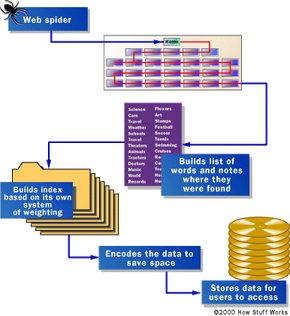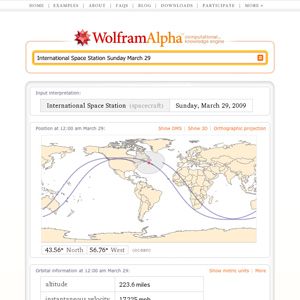When most people talk about Internet search engines, they really mean World Wide Web search engines. Before the Web became the most visible part of the Internet, there were already search engines in place to help people find information on the Net. Programs with names like "gopher" and "Archie" kept indexes of files stored on servers connected to the Internet, and dramatically reduced the amount of time required to find programs and documents. In the late 1980s, getting serious value from the Internet meant knowing how to use gopher, Archie, Veronica and the rest.
Today, most Internet users limit their searches to the Web, so we'll limit this article to search engines that focus on the contents of Web pages.
Before a search engine can tell you where a file or document is, it must be found. To find information on the hundreds of millions of Web pages that exist, a search engine employs special software robots, called spiders, to build lists of the words found on Web sites. When a spider is building its lists, the process is called Web crawling. (There are some disadvantages to calling part of the Internet the World Wide Web -- a large set of arachnid-centric names for tools is one of them.) In order to build and maintain a useful list of words, a search engine's spiders have to look at a lot of pages.
How does any spider start its travels over the Web? The usual starting points are lists of heavily used servers and very popular pages. The spider will begin with a popular site, indexing the words on its pages and following every link found within the site. In this way, the spidering system quickly begins to travel, spreading out across the most widely used portions of the Web.
Google began as an academic search engine. In the paper that describes how the system was built, Sergey Brin and Lawrence Page give an example of how quickly their spiders can work. They built their initial system to use multiple spiders, usually three at one time. Each spider could keep about 300 connections to Web pages open at a time. At its peak performance, using four spiders, their system could crawl over 100 pages per second, generating around 600 kilobytes of data each second.
Keeping everything running quickly meant building a system to feed necessary information to the spiders. The early Google system had a server dedicated to providing URLs to the spiders. Rather than depending on an Internet service provider for the domain name server (DNS) that translates a server's name into an address, Google had its own DNS, in order to keep delays to a minimum.
When the Google spider looked at an HTML page, it took note of two things:
- The words within the page
- Where the words were found
Words occurring in the title, subtitles, meta tags and other positions of relative importance were noted for special consideration during a subsequent user search. The Google spider was built to index every significant word on a page, leaving out the articles "a," "an" and "the." Other spiders take different approaches.
These different approaches usually attempt to make the spider operate faster, allow users to search more efficiently, or both. For example, some spiders will keep track of the words in the title, sub-headings and links, along with the 100 most frequently used words on the page and each word in the first 20 lines of text. Lycos is said to use this approach to spidering the Web.
Other systems, such as AltaVista, go in the other direction, indexing every single word on a page, including "a," "an," "the" and other "insignificant" words. The push to completeness in this approach is matched by other systems in the attention given to the unseen portion of the Web page, the meta tags. Learn more about meta tags on the next page.



